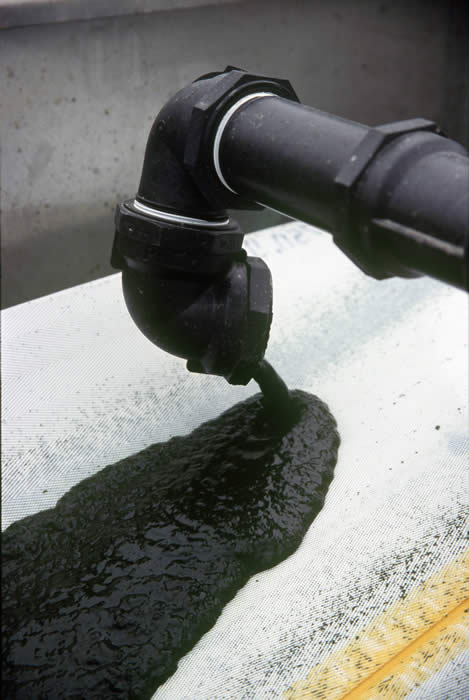 Reports timed to influence the approach to Copenhagen are continuing to appear. The latest, launched a few days ago by Tony Blair, is Breaking the Climate Deadlock: Technology for a Low Carbon Future. It comes from the The Climate Group in partnership with The Office of Tony Blair. The Climate Group is an international NGO which focuses on speeding up the shift to a low carbon economy. Its members are large businesses and government entities at city, state and regional levels who have signed up to a set of principles which fully recognise the seriousness of human-caused climate change and the urgency of the need to address it. The report was prepared by E3G, another NGO which works to deliver outcomes with strategic significance for the transition to sustainable development. Continue reading “Technology to break climate deadlock”
Reports timed to influence the approach to Copenhagen are continuing to appear. The latest, launched a few days ago by Tony Blair, is Breaking the Climate Deadlock: Technology for a Low Carbon Future. It comes from the The Climate Group in partnership with The Office of Tony Blair. The Climate Group is an international NGO which focuses on speeding up the shift to a low carbon economy. Its members are large businesses and government entities at city, state and regional levels who have signed up to a set of principles which fully recognise the seriousness of human-caused climate change and the urgency of the need to address it. The report was prepared by E3G, another NGO which works to deliver outcomes with strategic significance for the transition to sustainable development. Continue reading “Technology to break climate deadlock”
Category: Climate business
Some cuts are bigger than others
 Nick Smith and the government’s insistence that a sensible emissions target for 2020 is too expensive to even contemplate is coming under more pressure with the release today of a report [PDF] prepared by the Green Party, which they claim shows that big cuts are affordable. Announcing the release of the report, Greens climate spokesperson Jeanette Fitzsimons said [Scoop]:
Nick Smith and the government’s insistence that a sensible emissions target for 2020 is too expensive to even contemplate is coming under more pressure with the release today of a report [PDF] prepared by the Green Party, which they claim shows that big cuts are affordable. Announcing the release of the report, Greens climate spokesperson Jeanette Fitzsimons said [Scoop]:
“The Government says it can’t be done, but careful research shows it can be done. Environment Minister Nick Smith says it’s too hard and too expensive to set a responsible target, but the facts and the science say something different,” Ms Fitzsimons stated. “In the absence of leadership from the Government on this issue, weâ’e done the work. There’s a way to be optimistic and constructive in the face of a major international challenge but it seems the Government is taking a different path.”
A key part of the Green strategy involves a major commitment to tree planting and pest control in native forests, both of which Smith seems keen to ignore or misrepresent — as his response, headlined Bold 2020 target comes with high price demonstrates. Smith is content to trot out his current mantra, “We need an ambitious but achievable goal for 2020 that balances the environmental risks of climate change with the economic impacts on New Zealand of reducing emissions”. The minister is of course completely correct, but since he lacks ambition, gets the “environmental risks” completely wrong and continually overstates the cost of action, I expect the government’s goal to be too soft — and therefore immensely damaging to New Zealand’s long term interests.
Update 5/8: Jeanette Fitzsimons at Frogblog on Nick Smith’s response to questions in the House today:
Not a single question of mine answered, not a single point in our report addressed, but finally, the last refuge of someone with no arguments, a personal attack […] NZ deserves a “can do” minister, not a “can’t do, won’t try” government.
South Island partnership in renewable biofuel
 An interesting item of news concerning Aquaflow, the Blenheim algae farming company written about previously on Hot Topic here and here. They are combining efforts with another South Island company Solray Energy on the conversion of the harvested algae into fuel.
An interesting item of news concerning Aquaflow, the Blenheim algae farming company written about previously on Hot Topic here and here. They are combining efforts with another South Island company Solray Energy on the conversion of the harvested algae into fuel.
The Aquaflow operation in the Marlborough sewage ponds does two things – produces wild algae biomass from which oil can be extracted, and at the same time results in a discharged water which has been cleaned by the process to WHO irrigation standards. The process of converting the biomass to fuel is obviously a key factor in the effectiveness of using naturally occurring algae. Solray has separately developed a reactor and extraction process to detoxify algae and deliver a crude oil and other co-products, with the oil capable of being refined as biofuel. It says it can convert all of the algae – not just the fatty acids – into the crude oil. Their new reactor can process several tonnes of harvested microalgae per day. It sounds a promising partnership. Continue reading “South Island partnership in renewable biofuel”
Tall trees
 Setting emissions targets means more than just making direct emissions cuts — it also means growing our carbon sinks. Climate change minister Nick Smith seems to want to ignore this, insisting (once more) in his interview with Kathryn Ryan this morning that because NZ’s emissions were now running 24% above 1990 levels, that a 40% target for 2020 would mean cutting emissions by 64%. That is, of course, nonsense, because it ignores the role played by our prolific forests. In a timely reminder of the carbon sink potential of forestry in NZ conditions, the Science Media Centre today released a paper by Associate Professor Euan Mason and senior lecturer Dr David Evison of the School of Forestry at the University of Canterbury. In their “Comment on forestry and climate change” [PDF here, available to HT readers by kind permission of the SMC] they say:
Setting emissions targets means more than just making direct emissions cuts — it also means growing our carbon sinks. Climate change minister Nick Smith seems to want to ignore this, insisting (once more) in his interview with Kathryn Ryan this morning that because NZ’s emissions were now running 24% above 1990 levels, that a 40% target for 2020 would mean cutting emissions by 64%. That is, of course, nonsense, because it ignores the role played by our prolific forests. In a timely reminder of the carbon sink potential of forestry in NZ conditions, the Science Media Centre today released a paper by Associate Professor Euan Mason and senior lecturer Dr David Evison of the School of Forestry at the University of Canterbury. In their “Comment on forestry and climate change” [PDF here, available to HT readers by kind permission of the SMC] they say:
New forest planting is a very feasible and viable method to reduce New Zealand’s net emissions. New plantings will provide capacity for New Zealand to implement cost-effective reductions in industry and agricultural emissions, and possibly to develop new sequestration technologies.
They go on to look at ways of increasing the forestry sector’s contribution to emission mitigation (the very thing that Smith is ignoring):
With the right policy settings and with appropriate help for landowners, we could
markedly increase the GHG benefits of forestry by:1. increasing the rate of new forest establishment;
2. increasing sequestration in existing forests; and
3. increasing the use of wood as a construction material
And here’s the kicker: they quote Piers MacLaren on the true potential of afforestation:
… if we consistently achieved a new planting rate of 50,000 ha/year, it would take the best part of a century before we established forest on all our eroding landscapes, and meanwhile we would have carbon credits to sell to others on the international market.
That’s the real challenge, the true potential that Smith and the government are missing. I can only speculate that the forestry industry doesn’t vote National.
In the meantime, I urge anyone who wants the facts about forest carbon sequestration in NZ and its potential for the future (as well as a good discussion of the policy challenges) to read this paper.
Farming carbon: part of the solution?
This column was published in the Waikato Times on July 14
 Could New Zealand agriculture be part of the solution to climate change? We know all too well that it is part of the problem – and that’s not an accusation, by the way, just a recognition. But problems are there to be tackled, and what is called carbon farming looks like one way in which agriculture can substantially contribute to climate change mitigation and at the same time improve the soils on which it depends.
Could New Zealand agriculture be part of the solution to climate change? We know all too well that it is part of the problem – and that’s not an accusation, by the way, just a recognition. But problems are there to be tackled, and what is called carbon farming looks like one way in which agriculture can substantially contribute to climate change mitigation and at the same time improve the soils on which it depends.
